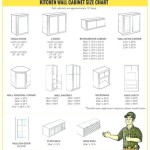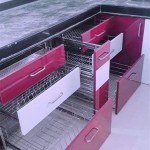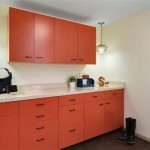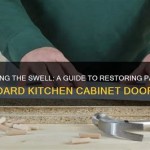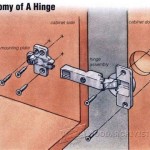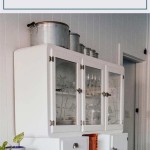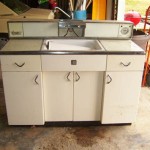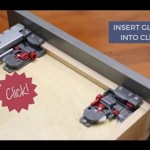Can You Replace Kitchen Cabinet Doors Yourself? A Comprehensive Guide
Replacing kitchen cabinet doors is a popular home improvement project undertaken by homeowners aiming to refresh the look of their kitchen without the expense of a complete cabinet replacement. It involves removing the existing cabinet doors and installing new ones, potentially updating the hardware, hinges, and drawer fronts as well. Whether this is a viable DIY project depends heavily on a homeowner's skillset, available tools, and the overall complexity of the task.
This article provides a comprehensive overview of the process, covering the necessary considerations and steps involved in replacing kitchen cabinet doors. It will assist in determining if this project falls within your capabilities and equip you with the knowledge needed to successfully complete the task or make an informed decision about hiring a professional.
Assessing Your Skill Level and Project Scope
Before embarking on replacing kitchen cabinet doors, a realistic self-assessment is crucial. Consider past DIY experiences, specifically those involving carpentry, measuring, and using power tools. The ability to accurately measure, align, and mount hardware is essential for a successful outcome. Are you comfortable using a drill, screwdriver, level, and potentially a saw? Have you previously installed hinges or other cabinet hardware?
The scope of the project also plays a significant role. Are you simply replacing the doors with identical models, or are you changing the style, material, or hinge type? A simple swap is generally easier than a complete overhaul. A change in hinge type, for example, might require drilling new holes, which demands precision and can be more challenging.
Furthermore, the condition of your existing cabinet boxes is important. Are they square and level? Warped or damaged cabinet boxes can complicate the installation process and might necessitate repairs before new doors can be installed. If the cabinet boxes themselves are in poor condition, replacing them entirely might be a more practical solution.
The presence of unusual cabinet configurations or custom-built cabinets also adds complexity. Standard-sized cabinets are generally easier to work with, as replacement doors are readily available. Custom cabinets might require custom-made doors, which can be more expensive and time-consuming to acquire.
Essential Tools and Materials
Having the right tools and materials on hand is paramount to a smooth and efficient cabinet door replacement project. Here is a comprehensive list of what you will likely need:
- Measuring tape: For accurate measurements of existing doors, cabinet openings, and hinge placement.
- Screwdriver (both Phillips head and flathead): For removing old hardware and installing new hardware. A power screwdriver can expedite this process.
- Drill: For drilling pilot holes and installing screws, especially if changing hinge types.
- Level: To ensure the new doors are aligned properly.
- Pencil: For marking measurements and hinge locations.
- Safety glasses: To protect your eyes from debris.
- Work gloves: To protect your hands.
- Shims: To fine-tune the alignment of the doors.
- Wood filler: To fill any old screw holes if necessary.
- Paint or stain (optional): To touch up any exposed areas or match the new doors to existing cabinets.
- New cabinet doors: Ensure you have the correct size, style, and material.
- New hinges: Choose hinges compatible with your cabinet frames and doors.
- New door hardware (knobs or pulls): Select hardware that complements the new doors and your kitchen décor.
- Wood screws: Ensure you have the correct size and type for mounting the hinges and hardware.
Consider renting specialized tools, such as a hinge boring jig, if you are unfamiliar with drilling hinge mortises. This can significantly improve the accuracy and quality of the installation.
Step-by-Step Installation Process
The following outlines the general steps involved in replacing kitchen cabinet doors. Always refer to the manufacturer's instructions for specific recommendations and safety precautions.
- Preparation: Clear the workspace, gather all necessary tools and materials, and protect the surrounding surfaces with drop cloths.
- Remove Existing Doors: Carefully remove the existing cabinet doors by unscrewing the hinges from the cabinet frame. Keep the old doors and hardware for reference, especially if you plan to reuse the existing hinge locations.
- Measure and Order New Doors: Accurately measure the openings of the cabinet boxes. Measure the height and width of each opening at multiple points to ensure accuracy. Ensure the new doors are slightly smaller than the opening to allow for proper clearance. When ordering, specify the desired style, material, and finish.
- Prepare New Doors: If necessary, pre-drill holes for hinges and hardware according to the manufacturer's instructions. A hinge boring jig can be helpful for precise placement.
- Install Hinges: Attach the hinges to the new doors, ensuring they are properly aligned. Use the appropriate screws and tighten them securely.
- Mount Doors to Cabinet Frames: Position the new door against the cabinet frame and align the hinges with the existing screw holes (if reusing the same hinge type). If drilling new holes, use a drill bit slightly smaller than the screw size to create pilot holes. Secure the hinges to the cabinet frame with screws.
- Adjust Alignment: After mounting the doors, check for proper alignment. Use shims to adjust the position of the doors if necessary. Loosen the hinge screws slightly and reposition the door until it is aligned correctly. Tighten the screws securely. Ensure the doors swing freely and close properly.
- Install Hardware: Install the knobs or pulls according to the manufacturer's instructions. Use a template to ensure consistent placement on all doors.
- Final Adjustments: Make any final adjustments to the hinges or door alignment. Check for any gaps or rubbing and address them as needed.
- Clean Up: Remove any debris and clean the cabinet doors and surrounding surfaces.
It is important to note that different hinge types may require different installation techniques. Concealed hinges, for example, require mortising the door and cabinet frame, which can be more complex than installing surface-mount hinges. Consult the hinge manufacturer's instructions for specific guidance.
Potential Challenges and Solutions
Replacing kitchen cabinet doors can present a number of challenges. Being prepared for these potential issues can save time and frustration.
- Incorrect Measurements: Inaccurate measurements can result in doors that are too large or too small. Double-check measurements before ordering new doors and consider ordering a single test door to verify the fit before ordering the entire set.
- Misaligned Doors: Doors that are not properly aligned can rub against each other or the cabinet frame. Use shims to fine-tune the alignment and ensure the cabinet boxes are square and level.
- Stripped Screw Holes: Overtightening screws can strip the screw holes in the cabinet frame. Use wood filler to repair stripped screw holes and allow it to dry completely before re-drilling. Consider using longer screws for a more secure hold.
- Difficulty Drilling New Holes: Drilling new holes for hinges can be challenging, especially if the cabinet frame is made of hard wood. Use a sharp drill bit and apply steady pressure. A hinge boring jig can significantly improve accuracy and prevent splintering.
- Matching Existing Finish: If you are only replacing some of the cabinet doors, matching the existing finish can be difficult. Take a sample of the existing finish to a paint store for color matching.
If you encounter significant challenges, it may be wise to consult with a professional carpenter or cabinet installer. They can provide expert advice and assistance to ensure a successful outcome.
Cost Considerations: DIY vs. Professional Installation
One of the primary reasons homeowners consider replacing cabinet doors themselves is to save money. The cost of replacing cabinet doors varies depending on several factors, including the material, style, and size of the doors, as well as the cost of hardware and installation.
DIY installation can significantly reduce labor costs, but it also requires an investment in tools and materials. Furthermore, it requires your time and effort. If mistakes are made, the cost of correcting them can negate the initial savings.
Professional installation typically includes the cost of the doors, hardware, and labor. While this is more expensive upfront, it can provide peace of mind knowing that the job will be done correctly. Professionals often offer warranties on their work, providing added protection against defects or installation errors.
To make an informed decision, obtain quotes from multiple contractors and compare them to the estimated cost of DIY installation, including the cost of tools, materials, and your time. Consider the value of your time and the potential cost of errors when making your decision.

Best Kitchen Cabinet Refacing For Your Home The Depot

Replacing Cabinet Doors

Update Kitchen Cabinets Without Replacing Them By Adding Trim

All About Replacing Cabinet Doors New

How Can I Change The Look Of My Kitchen Cabinet Doors Now

Cabinet Doors Diy Refacing Supplies Replacement Depot

How To Reface Kitchen Cabinets Affordable Cabinet Update On A Budget Anika S Diy Life

Diy Cabinet Refacing Budget Friendly Made Easy Wisewood

How Much Does It Cost To Replace Kitchen Cabinet Doors

Diy Cabinet Refacing Budget Friendly Made Easy Wisewood
Related Posts

